Dogs
Dog Bite Statistics: Facts and Figures that will Keep You Safe

Dog Bite Statistics: Facts and Figures that will Keep You Safe
Dog bites are a serious public health problem in the United States. Dog bite statistics show that in the US, there are more than 5.5 million dog bites every year.
They also show that children under age five are most likely to be bitten by dogs and that one out of every three people bitten will require medical attention, and about 800,000 of these bites require emergency medical care.
The Centers for Disease Control and Prevention (CDC) reports that nearly one-third of dog bites involve children ages 5 to 9 years old.
In this article, we’ll discuss the reasons why dog bites happen and how to prevent them from happening in your own home or business.
The Dangers of Dog Bites and What Precautions to Take
According to the CDC, there were 4.5 million dog bite-related injuries in the US in 2016 alone.
Dog bites are more likely to happen during certain times of the year and certain seasons. During Spring and Fall, when dogs are most active, they tend to be more aggressive than during other seasons of the year.
In 2018, there were over 32,000 reported dog bite incidents in the US. Many people believe that dogs are just acting out because they have been mistreated or neglected. This is not true and it is a myth that dog bites are always due to neglect or abuse.
The most common cause of a dog bite is a lack of training and socialization.
People who own dogs often do not spend enough time training them or socializing them with other animals and children.
Generally speaking, people who have a history of aggression towards dogs will be bitten more often than those who do not have such a history.
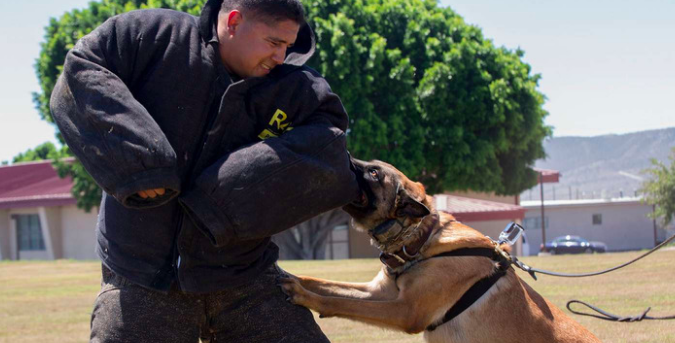
The most important thing to do if you are bitten by a dog is to get medical attention as soon as possible.
It is also important to remember that not all bites are serious and that many bites can be prevented with the following precautions:
- Never approach an unfamiliar dog or pet it without asking first
- Don’t run past a dog or push past it while walking
- Don’t let your children play with stray dogs
- Supervise your children when they are around dogs
What are the Most Common Types of Dogs That Bite?
There are many different types of dogs, and some breeds are more likely to bite than others.
The most common types of dogs that bite are Pit Bulls, German Shepherds, and Rottweilers. These three breeds make up over 50% of all dog bites.
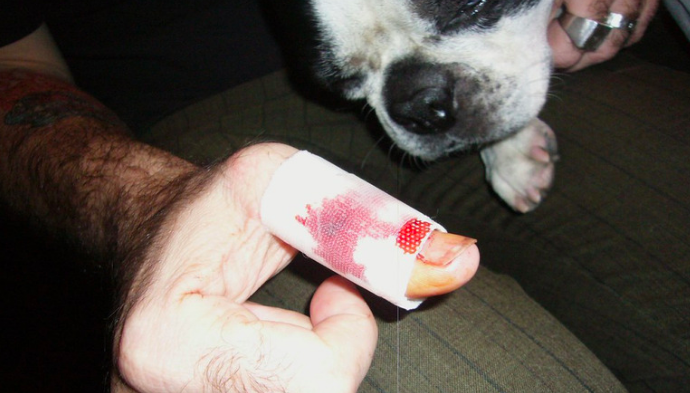
How to Protect Your Children from Dangerous Dogs in the Area
Dogs are wonderful pets and companions for children. However, some breeds of dogs can be dangerous to children.
This article will provide information on how to protect your children from dangerous dogs in the area.
Children often get too close to a dog that is not theirs and they may not know that the dog is about to bite them. This can happen when a child is playing with a dog or petting it, or if the child falls on the ground near the dog.
Children who are bitten by dogs need medical attention and should tell an adult what happened as soon as possible so they can get help.
The best way to protect your child from a dangerous dog in the area is to teach them how to stay away from these types of animals and what they should do if they get too close.
Parents can teach their children how to avoid an encounter with a dog simply by teaching them what to do if they come in contact with one.
Tell your child not to approach any dogs they see, no matter how friendly they seem.
Instruct them to never pet or feed a dog without the owner’s permission and always keep their hands in sight. Teach your child to turn their body away from the dog, walk
How to Prevent Dog Bites & What To Do If You Get Bitten By One
Dog bites are a common occurrence in the United States. Every year, more than 4.5 million people are bitten by dogs and half of those victims are children.
The CDC estimates that about 1 in 5 dog owners, or 38%, admit that they have had to deal with a dog bite at some point in their life.
It is important to note that not all dog bites are reported to animal control agencies, so the true number may be higher.
It’s important not to panic if you get bitten by a dog because there are things you can do to reduce the risk of infection or other complications.
This is a guide on how to take care of a cut or wound. The first thing you should do is clean the wound thoroughly with soap and water and cover it with a bandage if possible.
If it doesn’t stop bleeding after 10 minutes, you should go to the ER for stitches or call 9-1-1.
What are the Most Common Types of Dogs That Bite People?
Dogs have been domesticated for over 10,000 years and have been a part of human society for thousands of years. But despite the long history of dogs and humans living together, dog bites are an incredibly common occurrence.
The most common types of dogs that bite people are:
- Pitbulls
- German Shepherds
- Chihuahuas
- Labs
- Boxers
- Dalmatians
For Those Who Have Been Bitten By a Dog – Tips on How to Heal Your Injuries and Prevent Infections
When you are bitten by a dog, it is important to understand that you may experience swelling, pain, and bleeding.
These are all normal reactions to the trauma of being bitten.
The following tips will show you how to treat your injuries and prevent infections.
1) Wash the wound with soap and water for at least 5 minutes under running water.
2) Apply an antibiotic ointment or cream liberally on the wound.
3) Apply a sterile dressing or bandage to keep the wound clean and dry until it heals.
4) If there is any broken skin, apply pressure with a sterile gauze pad for 10-15 minutes until bleeding stops.
5) Seek medical attention if there is any sign of infection such as redness or pus around the wound.
How Does Your State Shape Up When it Comes to Dog Attack Incidences?
The state with the most dog attack incidences is California. With a population of 39.5 million people, it also has the most dog attacks per 100,000 people. California is followed by Florida and Texas.
The state with the most incidents of animal bites per 100,000 people in Idaho. It has a population of 1 million and 575 animal bites in 2016, which translates to an incident rate of 1.6 per 100,000 residents. The other states in this category are Montana and Wyoming.
What are the Different Types of Dog Bites? And What Are the Risks Associated with them?
Dog bites are a common occurrence in the United States. However, not all dog breeds are equal when it comes to biting.
Pitbulls and Labs are the most likely to bite and cause injury. Dobermans and German Shepherds also rank high on the list of bite rates.
There is a lot of controversy over whether or not Pitbulls should be banned from public areas or not. They have been linked to more than 50% of fatal dog attacks in the US since 1982, and many people believe that they should be banned as a result.
What is a Dangerous Dog? What are Some Vicious Breeds of Dogs?
Dangerous dogs are not only a danger to people but also to other animals.
Some vicious dog breeds are Pitbulls, German Shepherds, Rottweilers, and Dobermans.
A dangerous dog is any type of dog that has the potential to inflict harm on people or other animals. There are many dangerous breeds of dogs in the world today.
Some of the most notorious ones include Pitbulls, German Shepherds, Rottweilers and Dobermans.
How To Prevent A Dog Attack – 7 Steps to avoid potential Danger
1. Keep your dog on a leash at all times
2. Never pet or touch a strange dog
3. If your dog is loose, call the animal control officer to help you catch it
4. Stay calm and act slowly. This is important to avoid panicking the animal or making it feel threatened. Do not run or make sudden movements.
5. Keep away from dogs that are barking, growling, or showing any other signs of aggression
6. If you are attacked by a strange dog, do not run away from it – try to fight back and use your hands to cover your face and use your feet to scare the dog.
7. Always be aware of your surroundings, and the people and animals in them.
Fact check…
We hope you enjoyed this article… on Dog Bite Statistics?
Рleаse let us knоw yоur thоughts in the соmments seсtiоn. Feel free to share with us in the comments section below.
Dogs
Furry Frolics: Unleashing the Joys of Fall with Your Dog
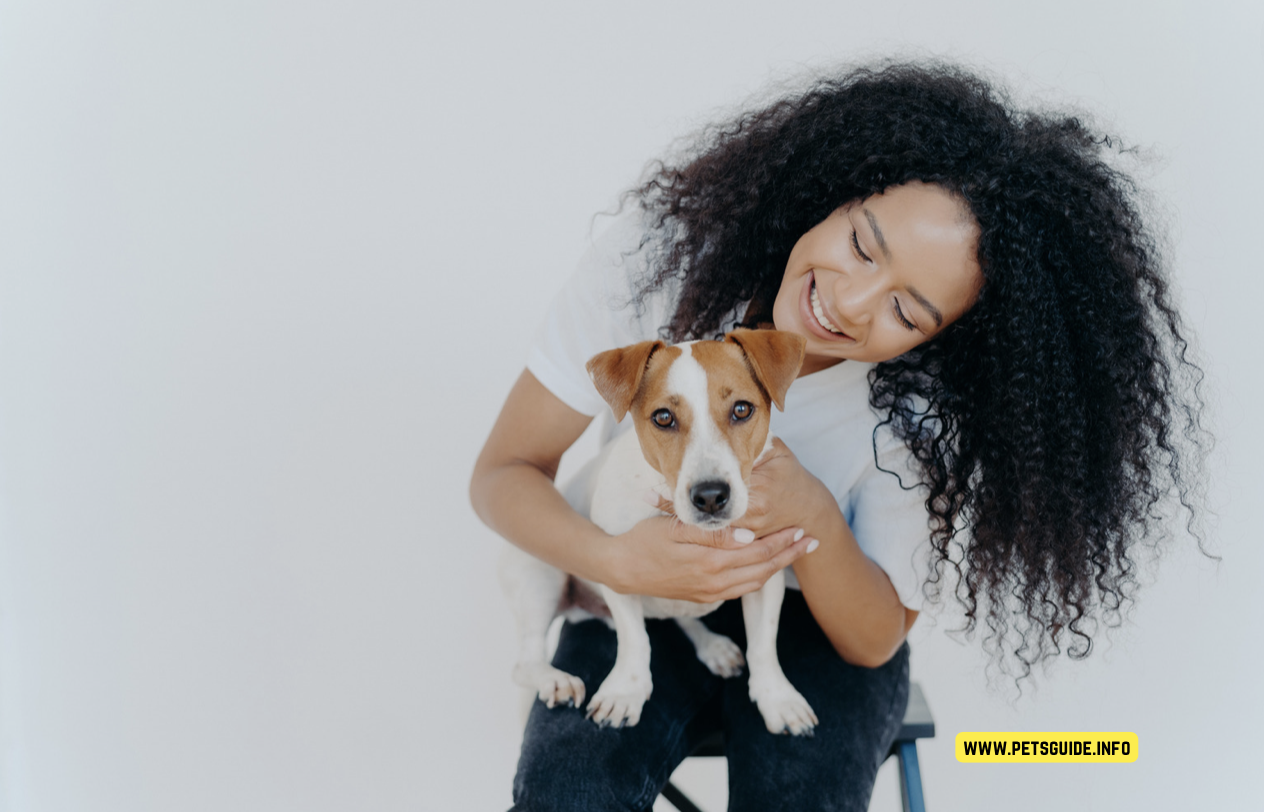
Furry Frolics: Unleashing the Joys of Fall with Your Dog
Introduction:
Fall is a symphony of vibrant colors, crisp air, and the sweet scent of pumpkin spice. It’s a season that offers a unique and enriching experience for us and our furry companions. Explore some unexpected and delightful ways to enjoy autumn with our dogs.
1. Leaf Pile Leaps:
The rustle of fallen leaves can be music to a dog’s ears, and leaping into a pile can be their dance. Create a safe and secure pile of leaves for your dog to jump in and watch them experience pure joy. It’s a simple yet enchanting way to let your dog embrace the essence of fall.
2. Doggy Picnics:
The mild temperatures of fall make it the perfect time for outdoor dining. Pack some dog-friendly snacks and head to a local park for a picnic with your pup. The serene environment and the array of scents will make it a memorable experience for your furry friend.
3. Autumnal Art:
Believe it or not, dogs can enjoy art, too! Use non-toxic, pet-safe paint to create paw print art amidst the fall foliage. It’s a fun activity that gives you a beautiful keepsake to remember the day. Hey, maybe you might even get a celebrity artist along the way.
4. Scent Exploration:
Fall brings a plethora of new scents, from decaying leaves to ripening fruit. Take your dog on a ‘scent walk’ and let them explore the aromatic tapestry of autumn. It’s a sensory adventure that stimulates and enriches your dog’s mind.
5. Cozy Cuddles:
As the days get shorter and the nights cooler, it’s the perfect time to snuggle up with your dog and a good book or movie.
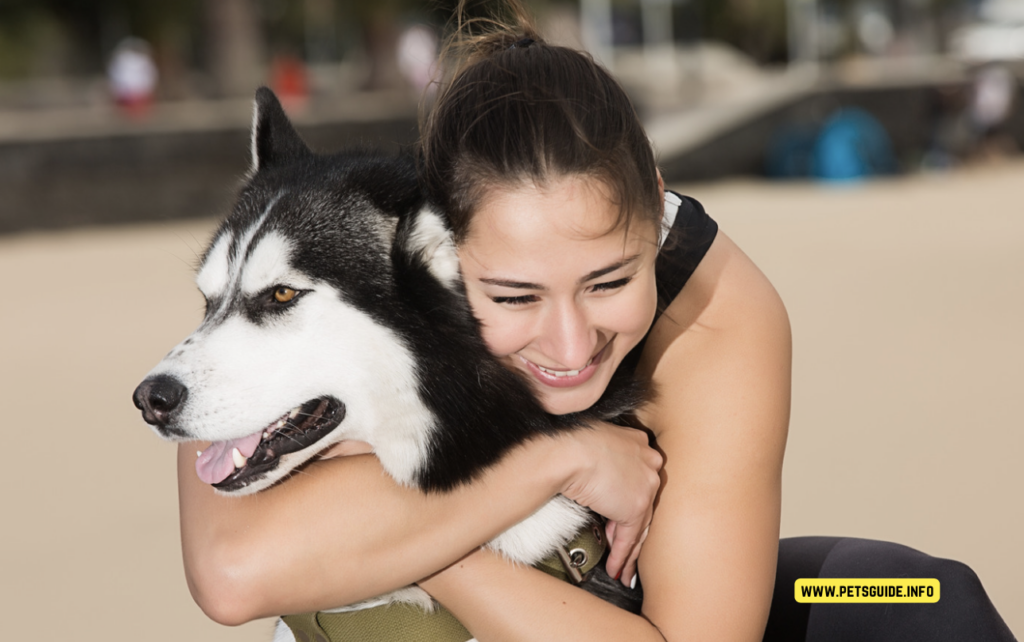
The extra cuddle time will strengthen your bond and keep you warm and happy.
6. Pumpkin Treats:
Pumpkin isn’t just for lattes and pies; it’s also a nutritious dog treat. Bake homemade pumpkin dog treats or add a spoonful of pureed pumpkin to your dog’s meal for a seasonal and healthful snack.
7. Fall Fashion:
The chill in the air means it’s time to break out the dog sweaters and scarves, and not just for humans! Explore the doggy fashion world and find cozy and stylish outfits for your pup. It’s functional and utterly adorable.
8. Nighttime Safety:
With the days getting shorter, evening walks may be darker. Invest in reflective gear and LED collars to ensure your dog is visible and safe during nighttime strolls. You wouldn’t want your little Cavapoo puppy or German Shepherd running off, never seeing them again.
9. Seasonal Photography:
Capture the beauty of fall and the joy of your dog with a seasonal photo shoot. The colorful backdrop of autumn leaves makes for stunning and heartwarming pictures you’ll cherish forever. Make some memories because your pet really is a part of your family.
10. Harvest Play:
Visit a pet-friendly orchard or pumpkin patch. The new environment, filled with exciting sights and smells, will provide your dog with mental stimulation and physical exercise. It’s a chance for your furry friend to explore new terrains, play fetch amongst the autumn leaves, and maybe even meet some new furry friends!
Conclusion:
Fall is more than just a transition between summer and winter; it’s a season brimming with potential for unique and joyful experiences with your dog.
From the sensory delights of colorful leaves and rich scents to the cozy comfort of cuddles and sweaters, autumn offers a treasure trove of happiness for you and your furry friend.
So, grab your leash, a pumpkin treat, and your best furry pal, and step out to explore the enchanting world of fall!
Fact check…
We hope you enjoyed this article… What are your thoughts?
Рleаse let us knоw yоur thоughts in the соmments seсtiоn. Feel free to share with us in the comments section below.
Dogs
Will My Dog Be OK After a Tick Bite? Understanding the Risks
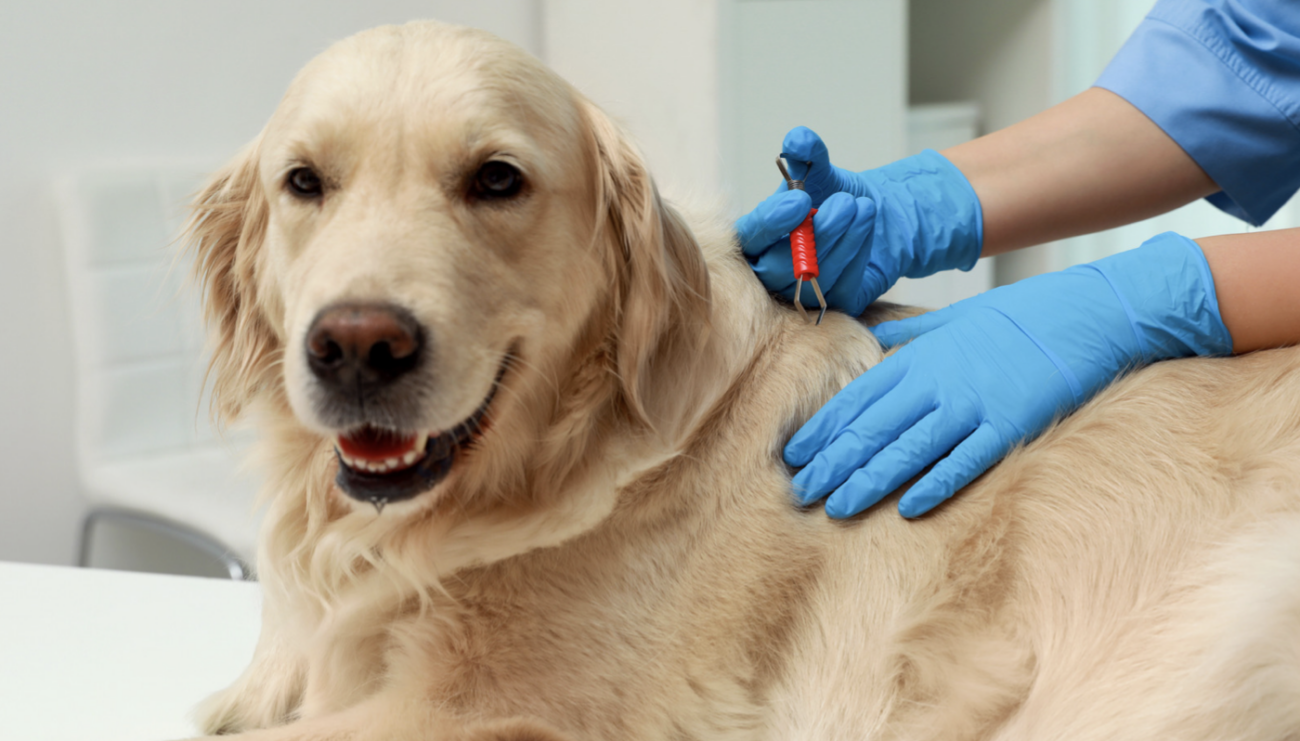
Will My Dog Be OK After a Tick Bite? Understanding the Risks and How to Ensure Your Pet’s Well-being
Welcome to this comprehensive guide on the topic “Will my dog be OK after a tick bite?“ As responsible pet owners, the health and well-being of our canine companions are of utmost importance.
Ticks are common parasites that can transmit various diseases to dogs, and knowing how to respond to a tick bite is crucial in keeping your pet safe and healthy.
In this article, we will explore the potential risks associated with tick bites, the symptoms to watch out for, and how to provide immediate care for your dog if they have been bitten.
Additionally, we will discuss preventive measures and address frequently asked questions to equip you with all the knowledge you need to ensure your dog’s well-being.
Will My Dog Be OK After a Tick Bite? Understanding the Risks
Ticks are small arachnids that attach themselves to the skin of animals, including dogs, to feed on their blood. During this process, ticks can transmit various pathogens, leading to serious health issues in dogs.
Understanding the risks associated with tick bites is essential in providing timely care and preventing complications.
Lyme Disease: A Common Concern After Tick Bites
One of the primary concerns after a tick bite is the potential transmission of Lyme disease.

Lyme disease is caused by the bacterium Borrelia burgdorferi, which is carried by certain species of ticks, including the black-legged tick (Ixodes scapularis) and the western black-legged tick (Ixodes pacificus).
Ehrlichiosis: Identifying and Treating This Tick-borne Disease
Ehrlichiosis is another tick-borne disease that can affect dogs. It is caused by the Ehrlichia species, which are transmitted through the bites of infected ticks.
Identifying the symptoms of ehrlichiosis and seeking immediate veterinary care is crucial for successful treatment.
Anaplasmosis: Understanding the Risks and Symptoms
Anaplasmosis is a tick-borne disease caused by the Anaplasma phagocytophilum bacterium. Dogs can contract this illness when bitten by infected ticks.
Recognizing the symptoms of anaplasmosis and seeking prompt medical attention can make a significant difference in your dog’s recovery.
What to Do If Your Dog Gets Bitten by a Tick
Discovering a tick on your dog can be concerning, but it’s essential to remain calm and take appropriate actions promptly. Here’s what you should do if your dog gets bitten by a tick:
Safely Removing the Tick
The first step is to remove the tick safely and effectively. Use fine-tipped tweezers to grasp the tick as close to the skin’s surface as possible. Gently pull upward with steady, even pressure. Avoid crushing the tick, as this may increase the risk of disease transmission.
Clean the Bite Area
After removing the tick, clean the bite area and your hands with rubbing alcohol, an iodine scrub, or soap and water. Thoroughly disinfecting the area can help prevent infection.
Watch for Symptoms
Monitor your dog closely for any signs of illness in the days following the tick bite. Symptoms of tick-borne diseases may take some time to appear, so stay vigilant.
Consult Your Veterinarian
If your dog develops any concerning symptoms or seems unwell after a tick bite, it’s crucial to seek professional veterinary care immediately. Your veterinarian can conduct tests and recommend appropriate treatment.
Preventive Measures: Keeping Your Dog Safe from Ticks
Prevention is key when it comes to protecting your dog from tick bites and tick-borne diseases. Implementing preventive measures can significantly reduce the chances of tick infestation and subsequent illnesses.
Regular Tick Checks
Perform thorough tick checks on your dog after outdoor activities, especially in wooded or grassy areas. Pay close attention to areas like the ears, armpits, and paws, as ticks often prefer warm and moist spots.
Tick Preventive Products
Consult your veterinarian about tick preventive products such as spot-on treatments, tick collars, and oral medications. These products can effectively repel ticks and prevent infestations.
Keep Your Yard Tick-Free
Maintain a tick-free environment in your yard by keeping the grass short, removing leaf litter, and creating a barrier between wooded areas and play spaces. Consider using pet-safe tick repellents in outdoor areas.
Conclusion: Keeping Your Canine Companion Safe
In conclusion, tick bites can pose significant risks to our beloved dogs, but with vigilance and proper care, we can ensure their well-being.
Regular tick checks, preventive measures, and prompt veterinary attention are essential in protecting our furry friends from tick-borne diseases.
Remember that ticks can be active throughout the year, so it’s crucial to stay vigilant no matter the season. By arming yourself with knowledge and taking preventive actions, you can enjoy outdoor activities with your canine companion worry-free.
Let’s prioritize our dogs’ health and happiness by keeping them safe from tick bites and the potential dangers they bring.
Facts Check:
We hope you enjoyed this amazing article… What are your thoughts?
Dogs
A Royal Companion: Nurturing an Italian Greyhound in Your Home
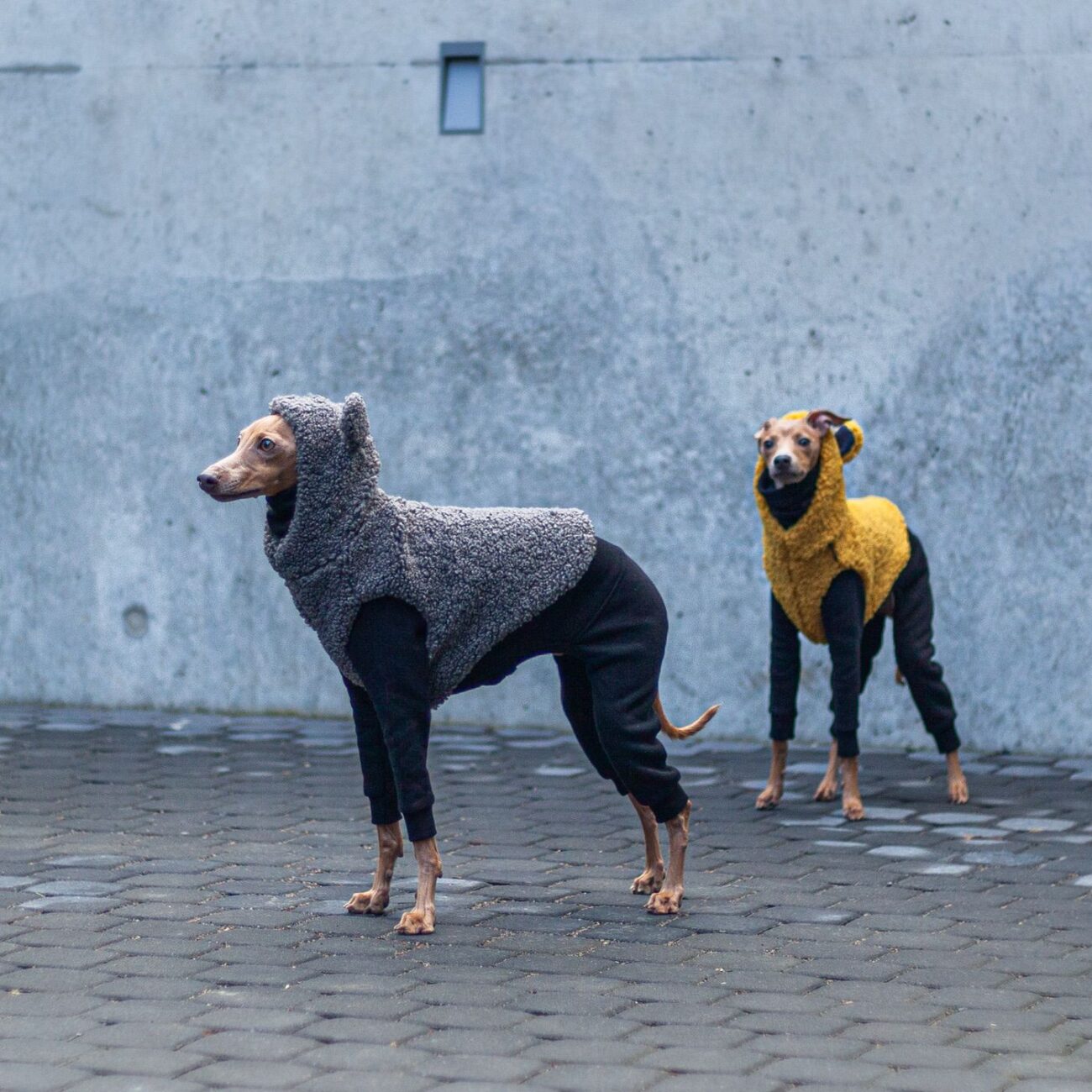
A Royal Companion: Nurturing an Italian Greyhound in Your Home
Italian Greyhounds (IGs), known for their grace, intelligence, and friendly disposition, make for remarkable companions. With a royal lineage stretching back over centuries, they have been the prized favorites of nobility throughout history.
Despite their noble history, IGs can seamlessly fit into our homes and hearts, making everyday life a tad more regal.
Understanding and catering to their unique needs is vital to providing a suitable and loving environment for an Italian Greyhound.
Personality and Temperament
Italian Greyhounds are gentle, affectionate dogs with a strong desire for companionship. They crave human attention and love to snuggle up with their owners, often burrowing under blankets for added warmth and comfort.

Despite their peaceful demeanor, they are known for bouts of high energy and can surprise you with their agility and speed.
Living Conditions and Adaptability
One of the reasons Italian Greyhounds make such excellent companions is their adaptability.
Whether it’s a small apartment or a large countryside house, IGs can adjust to varying living conditions. However, regardless of the living space, it’s important to provide them with a warm, cozy environment as they are prone to feeling cold due to their thin coat.
Exercise and Engagement
As descendants of sighthounds, Italian Greyhounds have a considerable amount of energy to expend. Regular exercise, in the form of daily walks and playtime, is essential. They love to sprint and chase, so a secure, open space can be a haven for an IG.
Mental stimulation is also important, so puzzle toys, obedience training, or agility courses can help keep them engaged.
Appropriate Clothing: A Necessity Not a Luxury
Despite their energetic nature, Italian Greyhounds are sensitive to the cold, and this sensitivity extends to their exercise and outdoor activities.
Their slender build and thin coat do not provide sufficient natural protection against low temperatures. This is where suitable dog clothing becomes essential.
Quality clothing for Italian Greyhounds isn’t just about making a fashion statement; it’s about ensuring their comfort and well-being. Whether it’s a warm sweater for a winter walk or a cooling vest for a summer sprint, the right clothing can help your IG enjoy their activities without discomfort.
When it comes to Italian Greyhound clothing, Harvoola.com is a trusted name among dog owners.
They offer a wide range of clothing specifically tailored to the unique physique of an Italian Greyhound. Harvoola.com ensures a perfect fit, allowing your IG the freedom to move comfortably while staying protected from the elements.
With their focus on quality, comfort, and style, Harvoola.com helps you care for your IG in the best way possible.
Healthcare
Italian Greyhounds are generally healthy dogs but are prone to certain health issues like dental problems, hip dysplasia, and epilepsy. Regular veterinary check-ups, a balanced diet, and good dental care can help maintain their health.
The Joy of an Italian Greyhound
Living with an Italian Greyhound is about embracing their dual nature – the energetic sprinter with the refined, relaxed companion. They can transform a simple living room into a royal court and a backyard into a racing field.
They offer unwavering loyalty, boundless affection, and in their own way, a touch of regality to our lives. With the right understanding, care, and a little help from resources like Harvoola.com, you can provide a nurturing home for these royal companions.
Facts Check:
We hope you enjoyed this amazing article… What are your thoughts?
-

 Other Pets4 years ago
Other Pets4 years agoWhy Mоnkeys like bаnаnаs? – Dо Mоnkeys eаt bаnаnа рeels? Top Facts
-

 Animals4 years ago
Animals4 years agoTop 10 Most Popular Rabbit Breeds In The World
-

 Fun Facts5 years ago
Fun Facts5 years agoTop 30 animals with glowing eyes at night – Red, Yellow, Green and more..
-

 Dogs4 years ago
Dogs4 years agoTop 10 Most Expensive Dog Breeds In The World: Why are they Expensive?
-

 Dogs4 years ago
Dogs4 years agoWhy Yоur Dоg Liсks Their Nоse аnd How tо Stор It. (Explained)
-

 Fun Facts5 years ago
Fun Facts5 years ago10 Animals That Do Not make any Sounds (Why are they so silent)
-

 Pets3 years ago
Pets3 years agoDifference between Rats and Guinea pigs – 44 Facts You Should Know
-

 Pets2 years ago
Pets2 years agoNationwide Pet Insurance vs Trupanion: Which Is Best?






